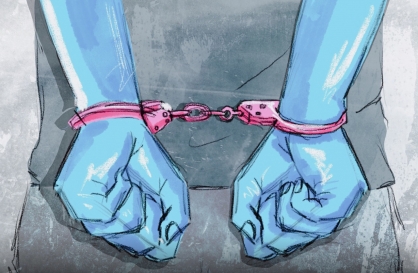[Doyle McManus] The upward mobility gap widening in the U.S.
By 류근하Published : Jan. 5, 2011 - 17:51
Here’s a familiar fact: Economic inequality is rising in the United States. The rich have gotten richer, the poor have stayed poor, and families in the middle have seen their incomes stagnate.
Here’s a less-familiar fact: Opportunity in America isn’t what it used to be either. Among children born into low-income households, more than two-thirds grow up to earn a below-average income, and only 6 percent make it all the way up the ladder into the affluent top one-fifth of income earners, according to a study by economists at Washington’s Brookings Institution.
We think of America as a land of opportunity, but other countries appear to offer more upward mobility. Children born into poverty in Canada, Britain, Germany or France have a statistically better chance of reaching the top than poor kids do in the United States.
What’s gone wrong? Thanks to globalization, the economy is producing high-income jobs for the educated and low-income jobs for the uneducated ― but few middle-income jobs for workers with high school diplomas. Thanks to the decline of public schools, it’s harder for poor kids to get a good education. And Harvard sociologist Robert Putnam argues that thanks partly to the rise of two-income households, intermarriage between rich and poor has declined, choking off another historical upward path for the underprivileged.
“We’re becoming two societies, two Americas,” Putnam told me recently. “There’s a deepening class divide that shows up in many places. It’s not just a matter of income. Education is becoming the key discriminant in American life. Family structure is part of it too.”
Increasingly, college-educated Americans live in a different country from those who never made it out of high school. As a group, adults with college degrees have an unemployment rate of 5 percent, steady or rising incomes, relatively stable families (their divorce rate declined over the last 10 years) and few children out of wedlock. Adults without a high school education, by contrast, face an unemployment rate over 15 percent, declining incomes, a higher divorce rate and have lots of kids out of wedlock. (Among black women who didn’t finish high school, 96 percent of childbirths are outside marriage; among white women who didn’t finish high school, 43 percent.)
And those mutually reinforcing conditions tend to stick from generation to generation. That’s nice for affluent kids but a bad break for the underprivileged.
“Success in life increasingly depends on how smart you were in choosing your parents,” Putnam said. “And that flies in the face of the fundamental American bargain ― that every kid ought to have access to the same opportunities.”
Can anything improve this troubling picture? Actually, yes. If we focus on increasing opportunity for the poor, there’s plenty that can be done ― beginning with education.
Brookings economists Ron Haskins and Isabel Sawhill studied the noneconomic components of poverty and came up with a rule. “If young people do three things ― graduate from high school, get a job, and get married and wait until they’re 21 before having a baby ― they have an almost 75 percent chance of making it into the middle class,” Haskins said.
Think of it as a stool with three legs: jobs, family and education. Government programs can help strengthen all three.
But the availability of jobs now depends mostly on the pace of economic recovery; the Obama administration has already done most of what it can on that score. Government promotion of stable families is an elusive goal; President George W. Bush funded programs like “marriage education” to encourage low-income couples to marry, but it’s hard to measure the results. (The one clear success story, Sawhill noted, has been a marked decline in teenage pregnancy, thanks to government-supported efforts in education and contraception; but 82 percent of teen pregnancies are still unplanned, so there’s still more to be done.)
That leaves education, which is the most promising ground for government action, in part because most Americans agree that fixing public education is the government’s responsibility. Haskins and Sawhill say there’s still plenty that can be done to increase access to higher education for low-income kids, including relatively easy things such as simplifying the application for college financial aid, which is an intimidating 127 questions long.
But perhaps the most important thing the federal government can do to promote opportunity, they say, is to expand its current efforts to improve public schools. The focus, Haskins said, should be on giving low-income students “more order, more work and more recognition for achievement.”
Education reform is already a bipartisan goal. Republicans support it as well as Democrats ― incoming House Speaker John A. Boehner, R-Ohio, as well as President Obama. They will probably disagree over how much to spend and over how much federal direction to give state and local authorities. But overcoming those differences is a worthy challenge for this new year.
Most Americans accept inequality in the economy as long as the ladder of opportunity is accessible to anyone who wants to work hard. The best way for America to reclaim its self-image as a land of opportunity is to ensure that every kid has access to a decent education ― now more than ever the first step onto the ladder. That’s why bipartisan education reform isn’t just about fixing schools; it’s about repairing the fabric of American society.
By Doyle McManus
Doyle McManus is a columnist for the Los Angeles Times. Readers may send him e-mail at doyle.mcmanus@latimes.com ― Ed.
(Los Angeles Times)
(McClatchy-Tribune Information Services)
Here’s a less-familiar fact: Opportunity in America isn’t what it used to be either. Among children born into low-income households, more than two-thirds grow up to earn a below-average income, and only 6 percent make it all the way up the ladder into the affluent top one-fifth of income earners, according to a study by economists at Washington’s Brookings Institution.
We think of America as a land of opportunity, but other countries appear to offer more upward mobility. Children born into poverty in Canada, Britain, Germany or France have a statistically better chance of reaching the top than poor kids do in the United States.
What’s gone wrong? Thanks to globalization, the economy is producing high-income jobs for the educated and low-income jobs for the uneducated ― but few middle-income jobs for workers with high school diplomas. Thanks to the decline of public schools, it’s harder for poor kids to get a good education. And Harvard sociologist Robert Putnam argues that thanks partly to the rise of two-income households, intermarriage between rich and poor has declined, choking off another historical upward path for the underprivileged.
“We’re becoming two societies, two Americas,” Putnam told me recently. “There’s a deepening class divide that shows up in many places. It’s not just a matter of income. Education is becoming the key discriminant in American life. Family structure is part of it too.”
Increasingly, college-educated Americans live in a different country from those who never made it out of high school. As a group, adults with college degrees have an unemployment rate of 5 percent, steady or rising incomes, relatively stable families (their divorce rate declined over the last 10 years) and few children out of wedlock. Adults without a high school education, by contrast, face an unemployment rate over 15 percent, declining incomes, a higher divorce rate and have lots of kids out of wedlock. (Among black women who didn’t finish high school, 96 percent of childbirths are outside marriage; among white women who didn’t finish high school, 43 percent.)
And those mutually reinforcing conditions tend to stick from generation to generation. That’s nice for affluent kids but a bad break for the underprivileged.
“Success in life increasingly depends on how smart you were in choosing your parents,” Putnam said. “And that flies in the face of the fundamental American bargain ― that every kid ought to have access to the same opportunities.”
Can anything improve this troubling picture? Actually, yes. If we focus on increasing opportunity for the poor, there’s plenty that can be done ― beginning with education.
Brookings economists Ron Haskins and Isabel Sawhill studied the noneconomic components of poverty and came up with a rule. “If young people do three things ― graduate from high school, get a job, and get married and wait until they’re 21 before having a baby ― they have an almost 75 percent chance of making it into the middle class,” Haskins said.
Think of it as a stool with three legs: jobs, family and education. Government programs can help strengthen all three.
But the availability of jobs now depends mostly on the pace of economic recovery; the Obama administration has already done most of what it can on that score. Government promotion of stable families is an elusive goal; President George W. Bush funded programs like “marriage education” to encourage low-income couples to marry, but it’s hard to measure the results. (The one clear success story, Sawhill noted, has been a marked decline in teenage pregnancy, thanks to government-supported efforts in education and contraception; but 82 percent of teen pregnancies are still unplanned, so there’s still more to be done.)
That leaves education, which is the most promising ground for government action, in part because most Americans agree that fixing public education is the government’s responsibility. Haskins and Sawhill say there’s still plenty that can be done to increase access to higher education for low-income kids, including relatively easy things such as simplifying the application for college financial aid, which is an intimidating 127 questions long.
But perhaps the most important thing the federal government can do to promote opportunity, they say, is to expand its current efforts to improve public schools. The focus, Haskins said, should be on giving low-income students “more order, more work and more recognition for achievement.”
Education reform is already a bipartisan goal. Republicans support it as well as Democrats ― incoming House Speaker John A. Boehner, R-Ohio, as well as President Obama. They will probably disagree over how much to spend and over how much federal direction to give state and local authorities. But overcoming those differences is a worthy challenge for this new year.
Most Americans accept inequality in the economy as long as the ladder of opportunity is accessible to anyone who wants to work hard. The best way for America to reclaim its self-image as a land of opportunity is to ensure that every kid has access to a decent education ― now more than ever the first step onto the ladder. That’s why bipartisan education reform isn’t just about fixing schools; it’s about repairing the fabric of American society.
By Doyle McManus
Doyle McManus is a columnist for the Los Angeles Times. Readers may send him e-mail at doyle.mcmanus@latimes.com ― Ed.
(Los Angeles Times)
(McClatchy-Tribune Information Services)






![[KH Explains] No more 'Michael' at Kakao Games](http://res.heraldm.com/phpwas/restmb_idxmake.php?idx=644&simg=/content/image/2024/04/28/20240428050183_0.jpg&u=20240428180321)



![[Grace Kao] Hybe vs. Ador: Inspiration, imitation and plagiarism](http://res.heraldm.com/phpwas/restmb_idxmake.php?idx=644&simg=/content/image/2024/04/28/20240428050220_0.jpg&u=)








![[Herald Interview] Xdinary Heroes shoot for the next level with 'Troubleshooting'](http://res.heraldm.com/phpwas/restmb_idxmake.php?idx=642&simg=/content/image/2024/04/29/20240429050745_0.jpg&u=)